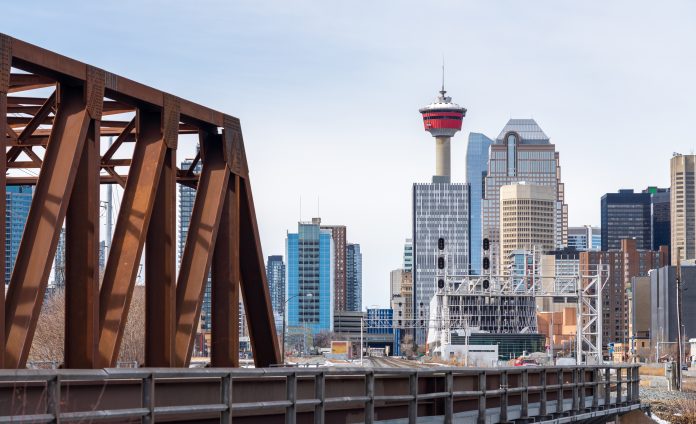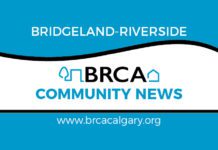by Deb Lee, Heritage Committee
4 Street NE in Riverside, originally known as Edmonton Trail, has seen a lot of traffic over the years. From the earliest Indigenous peoples travelling on foot on the “Old North Trail,” to the horse and buggy era of the 1900s, to today’s vehicles rushing into downtown, it has been a well travelled route. The first Langevin Bridge, built in 1888, had such busy horse traffic that its wooden beams were breaking down and becoming unsafe. This necessitated the construction of the second and much sturdier Langevin Bridge in 1910. That bridge was renamed Reconciliation Bridge in 2016. Millions of feet and vehicles have crossed the Bow River at this location over the years.
If you were travelling by horse, you needed a place to “park” it. This was done in the village of Riverside at Pioneer Livery Stables. Located beside the Riverside Hotel (adjacent to the Bow River), the stable was the place for horses to be fed, rested, and otherwise tended to. Piles of “you know what” accumulated beside the stable, giving off a very noticeable aroma that was said to permeate all corners of the community.
Horses pulled a variety of conveyances in those early days. Stagecoaches with passengers heading out on the four-day journey to Edmonton thundered up 4 Street. Deliveries of items such as milk, vegetables, laundry, and ice were made by horse and wagon and supplies would have been distributed to the many small Riverside businesses. A horse-drawn firewagon operated from Fire Station #4 on nearby 6A Street.
The electric-powered streetcar was introduced to Calgary in 1909, and soon after, a north-bound route crossed the bridge and headed up 4 Street. It turned east at the 1 Ave corner (where Lukes is today) toward the Calgary General Hospital in the nearby community of Bridgeland. A second streetcar was needed to carry the many local labourers to their jobs at the Ogden railyards or the Brewery. Later, the diesel-powered #9 bus plied this route, but many wonder if the steel rails for the streetcar still exist under today’s pavement.
It wasn’t long before automobiles came into use. One of the earliest stories describes a local doctor whose car could not make it up the steep and probably not too smooth incline of Edmonton Trail. He very resourcefully turned the car around and drove up the hill backwards, perhaps a precursor to the front-wheel drive vehicles we have today.
Over the years, there have been car businesses as well. For many years, Farmer Jones Used Cars operated on the NW corner of 4 Street and Memorial Drive – just south of the Armour/Reliance block. Owned by the colourful Ed Pizinger, this car lot also had a corral with numerous farm animals that was a special attraction for local kids. Further north on 4 Street was a dealership selling Alfa Romeo cars, and later, Ansell Motors that sold Russian Lada vehicles, all in keeping with the multi-cultural vibe of Riverside. For many decades, a gas station was located on the NE corner of 4 Street and Memorial Drive. Riverside Service Station, Esso, and the current Centex have all had a presence there.
With the 1970’s construction of a new northbound road, known today as Edmonton Trail (from Memorial Drive to 2 Avenue), and the conversion of 4 Street to a one-way southbound thoroughfare, the neighbourhood ambiance of 4 Street was significantly (and many would say negatively) altered. But nowadays new buildings are being constructed and more people are coming here to live. There seems to be an irresistible attraction to Riverside’s historic 4 Street. Take a stroll along 4 Street and imagine the fascinating place that it would have been and envision the amazing place it can become!
Thank you to Alan Zakrison and Devon Blean for your intrepid research work over the years.










